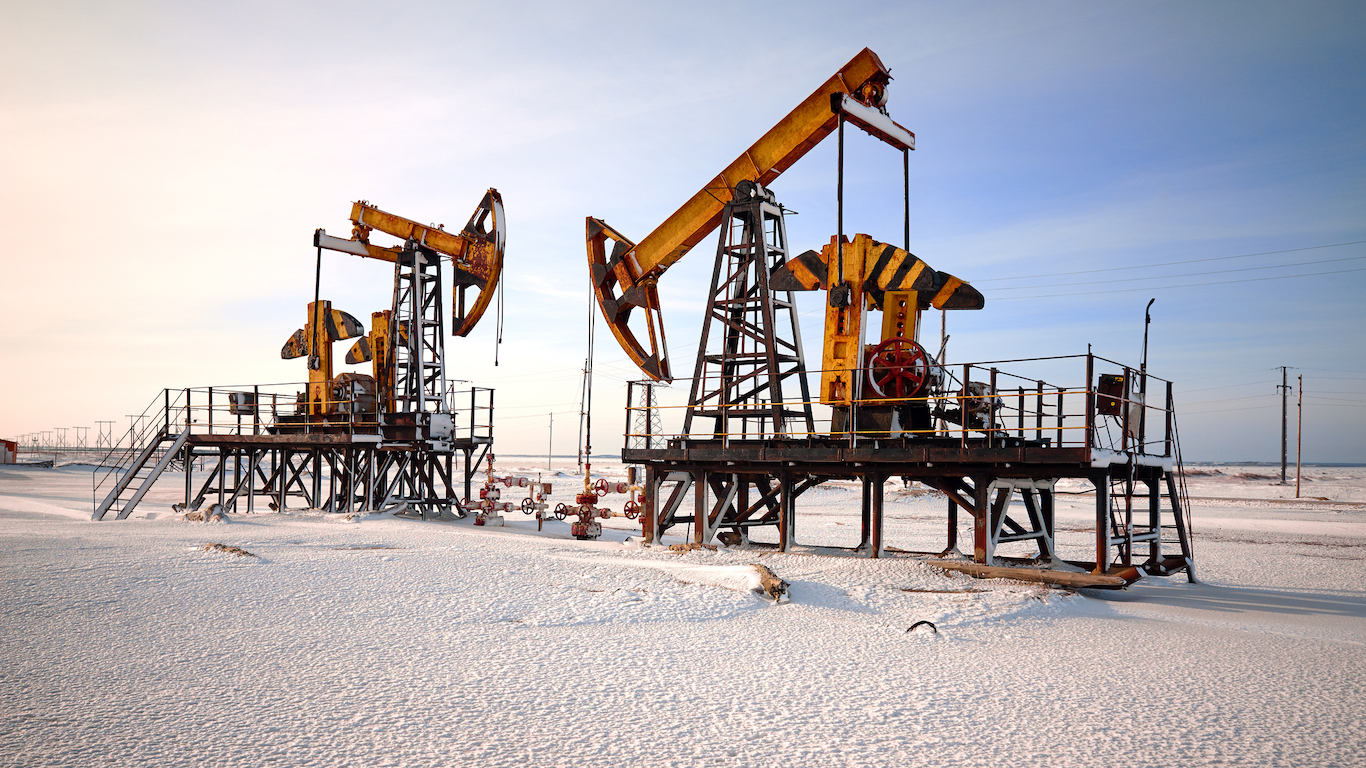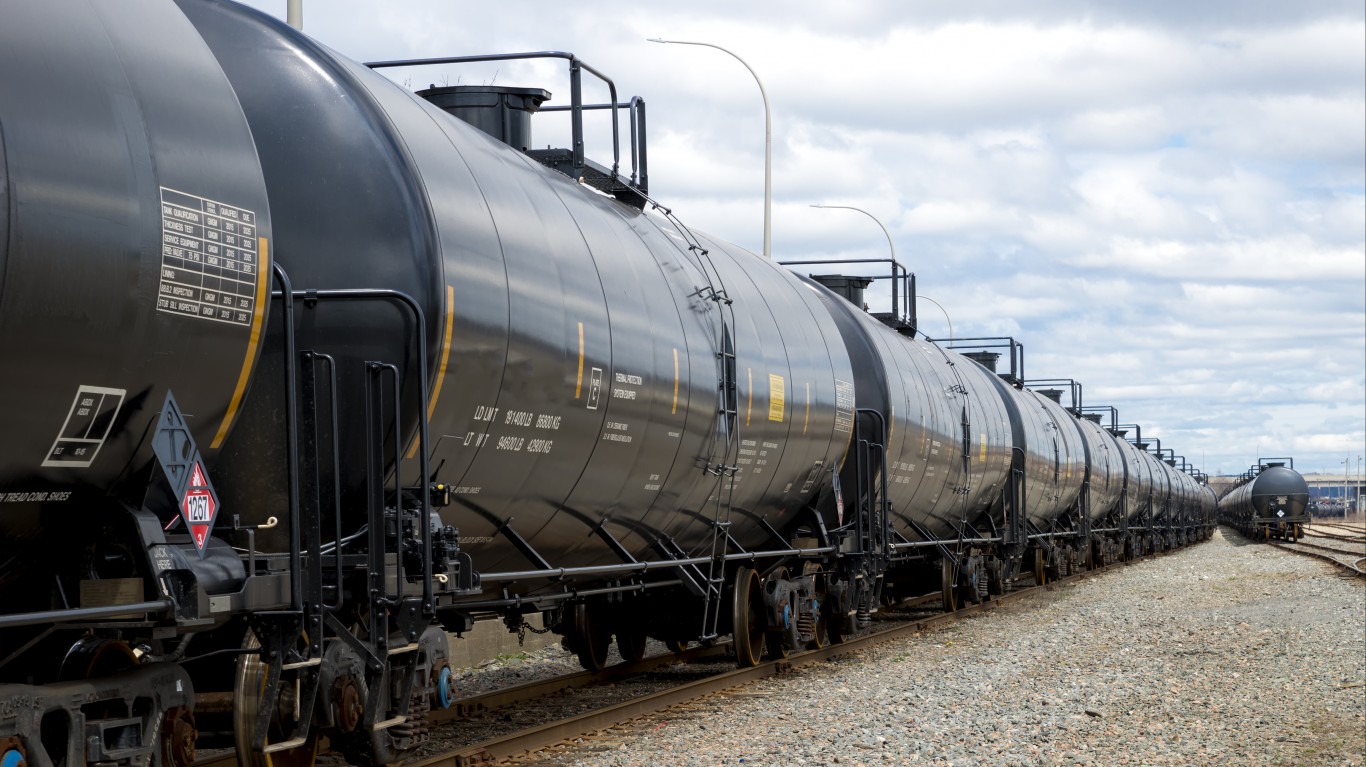
Monitoring the price of oil in a macroeconomic situation with volatile financial markets can get a bit tricky. Now that oil officially has entered into a bear market by falling 20% from its highs, West Texas Intermediate crude is at risk of falling back under $50 per barrel. It is also challenging some support levels from last November, which ultimately failed and oil slid to just under $45 during the peak of the selling pressure in December.
Oil has long been a key barometer for a real-time reading on the global economic picture. There may be a move to clean energy and renewables, but oil still dominates the energy world. Sometimes oversupply has an impact on oil prices, and sometimes weaker perceived does. In the current scenario, with oil at $51.70 per barrel, it’s a combination of both and that is a problem.
If there is one group that relies firmly on the price of oil, look no further than the Organization of the Petroleum Exporting Countries (OPEC). Mohammad Sanusi Barkindo, OPEC secretary-general, delivered a speech to the RBC Energy Conference that may have some foreshadowing information showing how OPEC will act ahead of the upcoming OPEC meeting and a meeting between Saudi Arabian and Russian energy ministers in St. Petersburg.
Barkindo discussed a “Declaration of Cooperation” wherein OPEC and non-OPEC nations have made a concerted effort to keep balance and stability in the oil markets, along with balancing the interests of producers and consumers. Voluntary production cuts were made in late 2016 and again in December of 2018, both of which acted to stabilize the price of oil.
A fresh report from Bloomberg, using Interfax contribution, showed how Russia’s Vladimir Putin and Saudi Arabia have differences on how they see oil prices today. While Putin has said Russia will continue its cooperation in an OPEC+ deal, Russia is happier with lower oil prices than the Saudis and the rest of OPEC. Russia is fine with $60 to $65 oil because the nation’s forward budgets have only assumed oil being at $40 per barrel. That said, trade wars and sanctions are also said to be creating uncertainties that prevent strategic planning.
Looking back at the end of 2018, when the OPEC+ alliance agreed to cut production by 1.2 million barrels per day, it sent oil prices sharply higher.
One issue has not been the case in decades past. U.S. domestic producers are able to fill in the lower production gaps now that the Permian and other shale plays are able to crank out massive amounts of oil. Longer term, there also will be more pipelines that actually get the oil out of the shale regions to ports where the oil can be exported more easily.
Another risk that may counter future production cuts from OPEC and additional nations is the supply from the Canadian oil sands. While these may not be profitable at lower prices, a fresh view from IHS Markit predicted that the 3 million or so barrels produced each day will grow by another million barrels per day (in 100,000 daily increments each year) by 2030.
The secretary-general of OPEC is already tipping his hand for continued (or more) production cuts ahead. Some of the comments from his address were as follows:
This commitment to a balanced market and a sustainable stability remains our key objective. And an agile and flexible approach will also be central to how we proceed in the months ahead.
As we stated at the recent Joint Ministerial Monitoring Committee (JMMC) in Jeddah we remain unyielding in looking to further bring down inventory levels, help return investment to the industry, and maintain a healthy supply and demand balance, without under or over-shooting.
When the next OPEC Ministerial Conference, and the OPEC and non-OPEC Ministerial Meeting, convene in the coming weeks, which I can assure you we will, it will once again underscore that all countries remain resolute in continuing to deliver on this commitment for the remainder of 2019 and beyond.
We also recognize the fact that underlying risks remain. We are closely monitoring oil market developments, which have seen a high level of volatility in recent weeks, with major challenges and uncertainties related to ongoing trade negotiations, monetary policy developments, as well as geopolitical issues.
The economic bearishness has led to many institutions revising down their expectations for the global economy and consequently oil demand growth. As you all know, there has also been a significant change in market sentiment, in both equity and financial markets, as attention is increasingly being focused on the Federal Reserve and the trade negotiations.
This will all play into our calculations in the upcoming ministerial meetings. We always take a very measured approach through the ‘Declaration of Cooperation’ – we look at the market outlook, we listen to consumers and other stakeholders, and I assure you that we are focused on the interests of the global economy. OPEC has a vested interest in the continued growth and stability of the US and by extension the global economy. …
OPEC recognizes that the challenge of balancing the oil market and maintaining stability is a continuous process, and a shared responsibility. … The ‘Declaration’ is not about short-termism. We are focused on continuity; we have short-term objectives, as well as long-term goals.
Saudi Arabia does not like to discuss one issue, and that is the planned IPO of Saudi Aramco needing higher oil prices to be feasible. While Saudi Aramco would be profitable at handily lower levels of its Saudi inventories and reserves, that isn’t necessarily the case at its other locations. On top of offices around the world, Saudi Aramco has venture projects, refineries and other operations throughout Asia, Europe and North America.
West Texas Intermediate traded at $51.60 per barrel on Thursday. It started out the year at roughly $46.50 and rose to over $66 by late April.
Get Ready To Retire (Sponsored)
Start by taking a quick retirement quiz from SmartAsset that will match you with up to 3 financial advisors that serve your area and beyond in 5 minutes, or less.
Each advisor has been vetted by SmartAsset and is held to a fiduciary standard to act in your best interests.
Here’s how it works:
1. Answer SmartAsset advisor match quiz
2. Review your pre-screened matches at your leisure. Check out the advisors’ profiles.
3. Speak with advisors at no cost to you. Have an introductory call on the phone or introduction in person and choose whom to work with in the future
Get started right here.
Thank you for reading! Have some feedback for us?
Contact the 24/7 Wall St. editorial team.
 24/7 Wall St.
24/7 Wall St.


